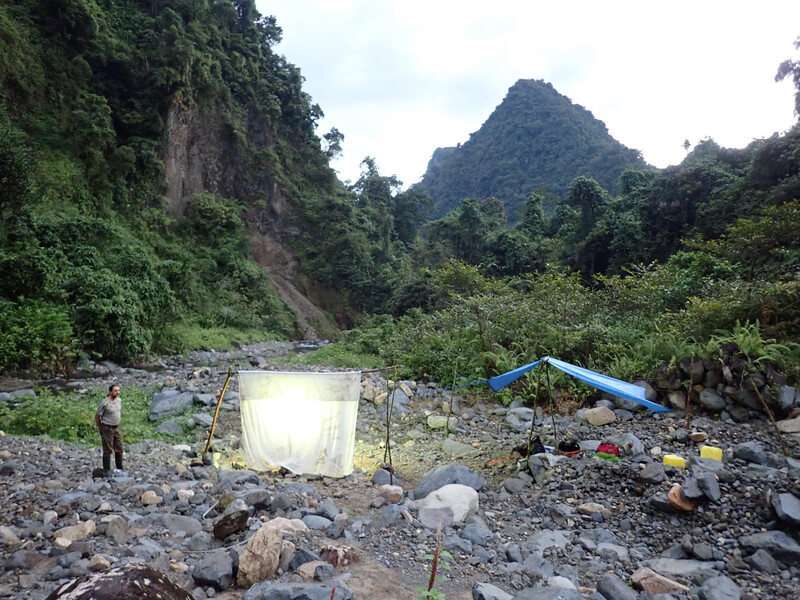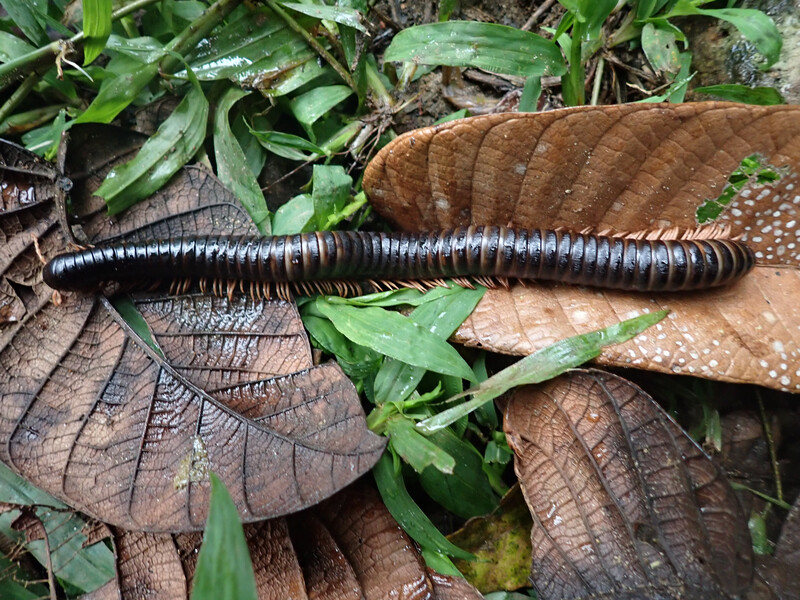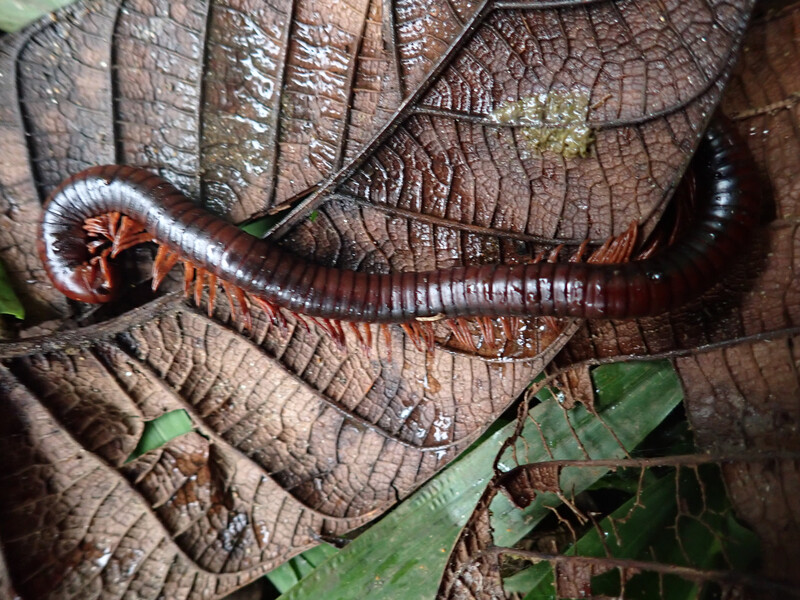It all began one morning when Christina Biggs, lost species officer for Re:wild, saw a giant millipede crawling over her boot. “I filmed it for a while because I thought it was cool, having no clue that it was an actual lost species,” she told CNN.
When Dmitry Telnov, a beetle specialist with the Natural History Museum in London, saw Biggs’ film, he sent it to a German colleague and specialist in Madagascan myriapods. The colleague identified the arthropod as a giant millipede. It was last documented in 1897 by Swiss scientists Henri de Saussure (entomologist) and Leo Zehntner (naturalist). That was 127 years ago.
Finding the giant millipede (Spirostreptus sculptures) was a pleasant accident. For the first time, a team of 30 people of many different animal persuasions went together to the Makira forest in northeastern Madagascar as part of the “Search for Lost Species” project. They looked for specific animals that hadn’t been seen for at least 10 years such as species of amphibians, birds, fish, invertebrates, mammals, and reptiles.

Searching for insects at dusk in Makira. Setting up a light trap in Makira to survey invertebrates at night during a lost species expedition in September 2023. (Photo by Merlijn Jocque) Source: https://assets.globalwildlife.org/
It was the first time that so many scientists with various animal specialties collaborated in Makira to find these animals. In the past, a scientist would do this with a partner searching for only one specific creature.
This time, because Makira is the largest forest in Madagascar that has rarely been touched by humans, they decided to maximize the project with a varied team of 30 specialists, knowing the forest is a perfect place for various woodland creatures to thrive. They wanted to find as many species as possible, with the aid of local guides.
The result was the discovery of 21 species, including three nearly translucent fish species, namely the Makira rainbow fish (Bedotia alveyi, lost since 2003), the Rheocles sp., (lost since 2006), and Ptychochromis makira, (lost since 2003).
They also found beetles, fish, and spiders. All of the animals that the scientists found hadn’t been recorded for one decade. Only the giant millipede was unrecorded for over a century.

Credit: Photo by Dmitry Telnov/NHM London, UK. Source: https://assets.globalwildlife.org/
The giant millipede is dark brown and has a segmented body. Each segment has two pairs of legs that bend. It is called Spirostreptus sculptus, and it averages a 5-year lifespan. At minimum, it grows six inches according to Ant’s Kingdom, but the one spotted in the forest was 11 inches long. They are also called “olive-striped” millipedes.
“I personally was most surprised and pleased by the fact that the giant millipede Spirostreptus sculptus, not uncommon in Makira Forest, appeared to be another lost species known only from the type specimen described in 1897,” said Telnov, a BINCO entomologist who was part of the expedition team.
“It’s important to continue researching the biodiversity of Makira because although it is one of the largest rainforests in the country, we still have relatively little idea which species occur, and there are likely to be many completely undescribed species as well,” added Julie Linchant from the Wildlife Conservation Society Madagascar.
Human Threats on the Makira Forest
Hopefully, Linchant and many other scientists will be able to continually study the flora and fauna of Makira, and human activity won’t find its way to this rich nature reserve. However, there are many threats that Makira faces. Primarily swidden agriculture, which is rain-fed watering as opposed to irrigated rice cultivation. Swidden agriculture requires the burning of forests. This type of agriculture can prevail so long as it doesn’t need to clear old growth trees. That would be possible with fallow seasons that should be 15 years. Unfortunately, there is limited land available and fallow periods are decreasing, which will lead to more clearing of old-growth forests.
Another threat is targeted bushmeat hunting. A USAID case study said that bushmeat hunting targeted 21 forest mammal species, including 4 carnivores, 3 bats, and 11 lemur species. Hunting doesn’t just kill the animals, it damages the forest. To catch one lemur, a trap will need 10 x 200 meters of cleared forest land. Third, illicit quartz mining makes use of local laborers to uproot trees and excavate mining sites for wealthy buyers.
“In the past, the Search for Lost Species has primarily looked for one or two species on each expedition, but there are now 4,300 species that we know of around the world that have not been documented in a decade or more,” said Christina Biggs, lost species officer for Re:wild.
Biggs discovered 37 vertebrate species by examining the environment. Although these species weren’t seen, Biggs’ eDNA work detected their existence. Biggs said, “Madagascar is a biodiversity hotspot and Makira is an underexplored area within the country, so we decided to pilot a new model for lost species searches there. We convened a group of scientists to search for as many species as possible, and it proved successful.”
Every Species Counts
“Effective conservation and protection efforts begin with understanding which species are present and where they are located. This is the core mission of BINCO NPO, with a focus on lesser-studied taxa—mainly invertebrate groups—and isolated areas like Makira,” said Merlijn Jocque of BINCO. He stressed that their work matters, “Because every species counts!”






